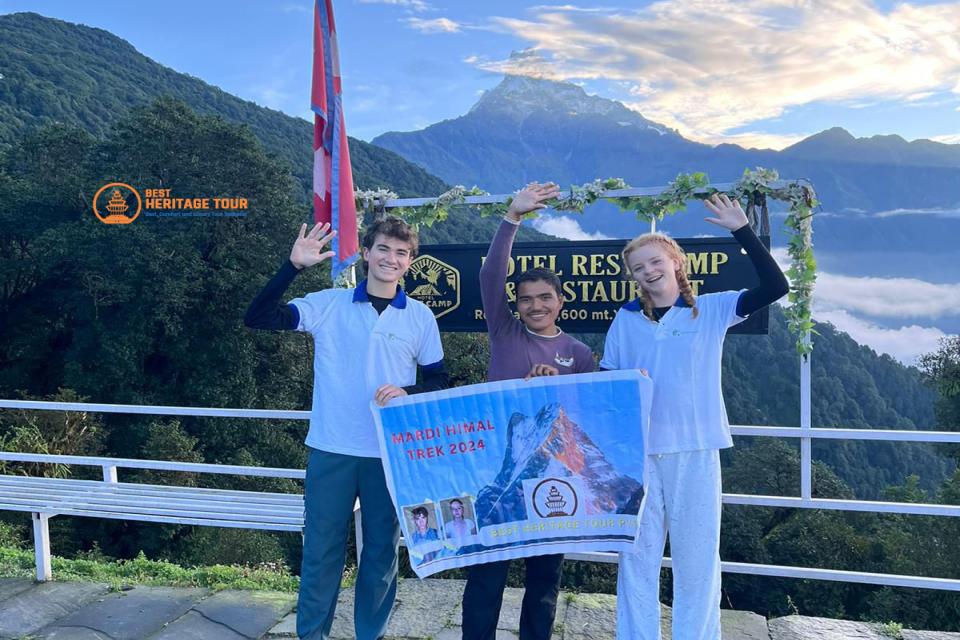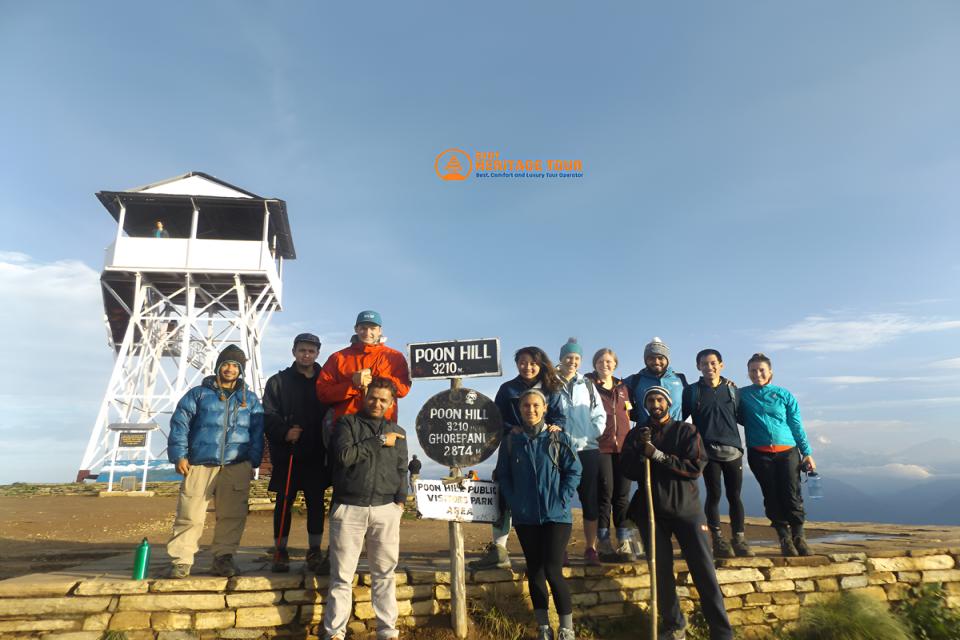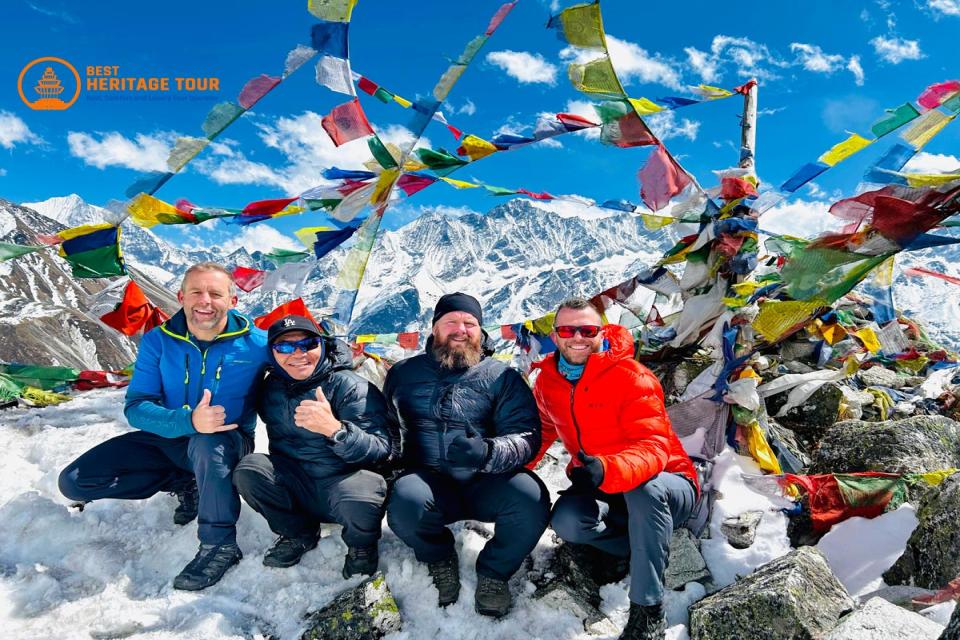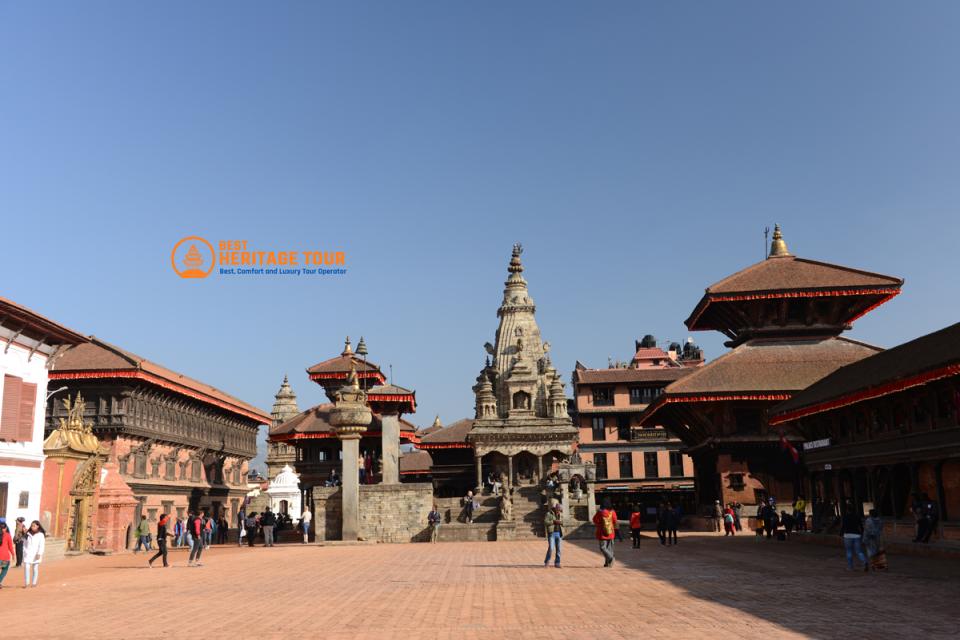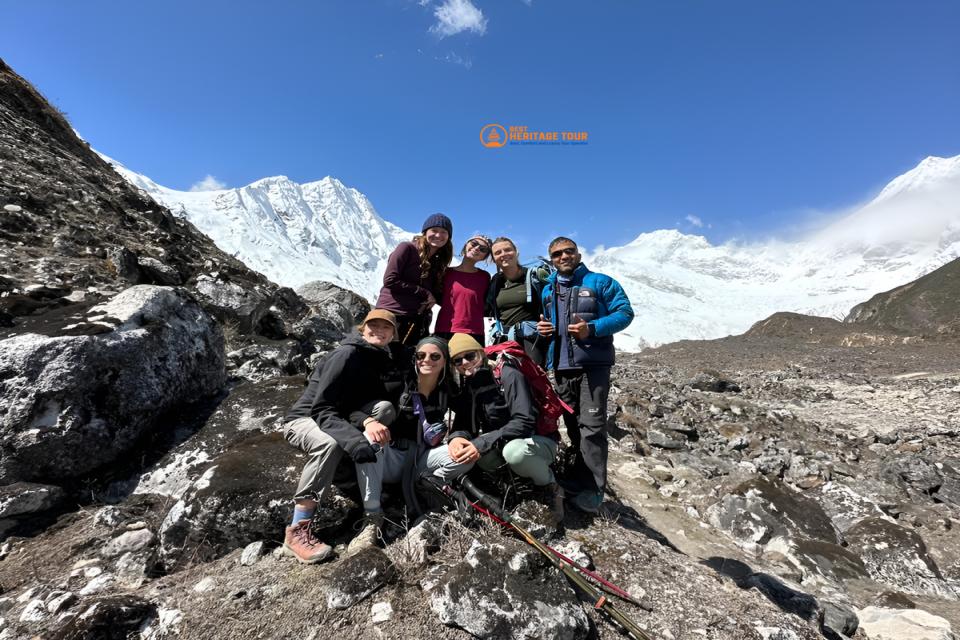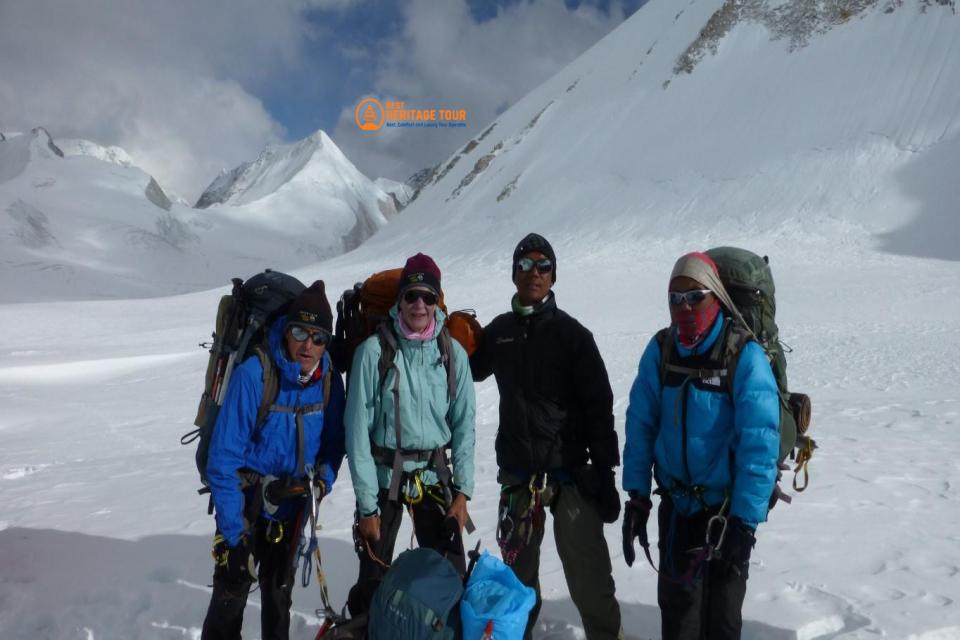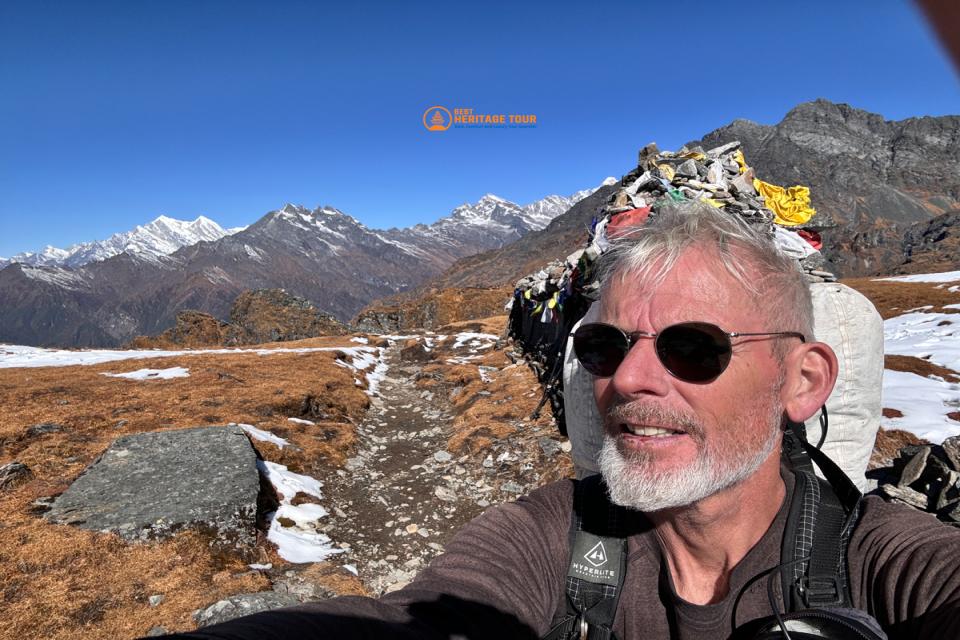As your dedicated partner in planning an unforgettable journey, Best Heritage Tour is here to ensure every detail of your Nepal trip - including how you manage your money - is seamless.
The question, “Can one pay by Credit Card while travelling in Nepal?” is one of the most frequent and important queries we receive from trekkers and travelers preparing for their adventure.
The simple answer is Yes, you can, but with significant limitations. Nepal offers a dual reality: sophisticated digital payment in the major cities, and an absolute reliance on cash in the magnificent, remote regions.
This definitive guide by Best Heritage Tour will provide you with the most current, honest, and practical information on when, where, and how to use your credit and debit cards effectively in Nepal, helping you manage your budget and avoid costly surprises.
1. The Credit Card Landscape in Nepal: The Dual Reality
Nepal's financial ecosystem is rapidly evolving, yet it maintains its charming, traditional roots. Understanding this contrast is the key to a stress-free trip.
1.1 Where Credit Cards Are Widely Accepted
In Nepal's main hubs, especially those catering to international tourists, your card money is a reliable friend.
-
Major Cities: Kathmandu (Thamel, Durbar Marg, Lazimpat) and Pokhara (Lakeside).
-
Accommodation: Large 3-star, 4-star, and 5-star hotels and well-established resorts.
-
Travel and Tour Operators: Reputable agencies, including Best Heritage Tour, accept card payments for booking deposits, trekking packages, flights, and major touring costs.
-
Retail: Large international retail stores, high-end handicraft shops, and some major trekking gear stores.
-
Dining: Upscale restaurants, international coffee chains, and popular tourist cafes.
-
Online Payments: Increasingly, online government services like the Electronic Travel Authorization (ETA) for your visa can be paid for directly online using foreign credit cards - a major recent improvement!
1.2 Where Cash Is the Absolute King
As soon as you step outside the main city areas and into the rural landscape, card acceptance vanishes, making Nepalese Rupees (NPR) essential.
-
Small Businesses: Local markets, street food vendors, small bhattis (local eateries), taxis, and public transportation.
-
Remote Accommodation (Tea Houses): Throughout the Everest, Annapurna, Langtang, and other popular trekking regions, tea houses operate exclusively on cash.
-
Local Entry Fees: Most temple entry fees, national park fees (though often included in our Best Heritage Tour package), and small local purchases must be cash transactions.
-
Tipping: Tipping your trekking guides, porters, and local service staff should always be done in cash (NPR).
2. Using Your Card to Get Cash: The ATM Strategy
Since cash is mandatory for daily expenses, the primary use of your international credit or debit card in Nepal will be for cash withdrawals from ATMs.
2.1 Card Acceptance at Nepali ATMs
The vast majority of functional ATMs in major cities support global networks.
-
Widely Accepted: Visa and Mastercard (both credit and debit cards).
-
Less Common: American Express (Amex), Maestro/Cirrus - these are accepted at select banks (e.g., Standard Chartered, Nabil, Himalayan Bank).
2.2 Navigating ATM Withdrawal Limits and Fees
This is the area that causes the most confusion and unexpected costs for travelers.
A. Local Nepali Bank Limits
Nepali banks impose strict limits on the amount you can withdraw per transaction using a foreign card.
-
Per Transaction Limit: Generally ranges from NPR 25,000 to NPR 35,000 (approximately USD $190 to $260), depending on the bank (some, like Standard Chartered, often allow the higher limit).
-
Daily Limit: While your home bank sets its own limit, local ATMs may restrict the number of daily transactions or impose an overall daily cap (typically around NPR 100,000 / USD $750 if your home bank allows it).
B. The Triple Layer of Fees
Every international ATM withdrawal can involve up to three separate charges:
-
Local ATM Fee (Fixed): Charged by the Nepalese bank owning the ATM. This is typically NPR 500 to NPR 700 (USD $3.75 to $5.25) per transaction.
-
Home Bank Foreign Transaction Fee (Percentage): Charged by your bank back home, usually 1% to 3% of the withdrawal amount.
-
Credit Card Cash Advance Fee (Fixed + Interest): If you use a credit card for cash withdrawal, your issuer will charge a high fixed fee (cash advance) and immediately begin charging high daily interest. Best Heritage Tour strongly advises using a debit card for cash withdrawals.
Best Strategy: Because the local ATM fee is a fixed cost per transaction, you must make the largest possible withdrawal (NPR 35,000 at a time) to minimize the impact of this fee. Instead of two NPR 10,000 withdrawals (incurring two fixed fees), aim for one NPR 35,000 withdrawal.
2.3 The Dynamic Currency Conversion (DCC) Warning
When using an ATM or a POS machine, you might be asked: “Would you like to be charged in Nepalese Rupees (NPR) or your home currency (e.g., USD)?”
-
The Trap: Choosing your home currency (DCC) means the local ATM company applies a highly unfavorable exchange rate, often costing you an extra 5% to 15%.
-
The Solution: Always choose to be charged in the local currency (NPR). This shifts the conversion to your card network (Visa/Mastercard), which uses a much fairer, near-interbank exchange rate.
3. Direct Card Payments (POS) at Tourist Establishments
When making larger payments, such as booking your trekking package with Best Heritage Tour or paying for a luxury hotel stay, direct card payment via a Point of Sale (POS) terminal is convenient and traceable.
3.1 The Merchant Surcharge: An Expected Cost
Be prepared for the most common financial reality of using a credit card for direct payment in Nepal: the merchant surcharge.
-
What it is: In Nepal, it is standard practice for merchants to pass on the fee charged to them by the local bank directly to the customer.
-
Typical Fee: This surcharge is typically 3% to 4% of the transaction amount for Visa and Mastercard payments.
-
Always Ask First: Before you swipe or tap your card, always ask the merchant or hotel reception about their specific credit card surcharge policy.
Why the Surcharge Exists: The merchant incurs a cost to process the payment electronically. Since margins can be tight, especially in the competitive tourism sector, they prefer to pass this cost along. Paying in cash (NPR or a major foreign currency like USD) allows you to avoid this extra fee entirely.
3.2 Security and Reliability of POS Machines
-
Technology: While modern Chip-and-PIN terminals are common in Thamel and Lakeside, you may still encounter older swipe-style machines. Never let your card leave your sight.
-
Connectivity: Card processing relies on a stable internet connection. While power cuts are now rare, connectivity issues can occur, especially during peak hours. Always allow extra time for the payment process. If a terminal fails, you will need a cash backup.
4. The Critical Difference: City vs. Trekking Trails
For trekkers, the most important distinction is the payment method required on the trails themselves.
|
Location |
Primary Payment Method |
Card Acceptance (POS) |
ATM Availability |
|---|---|---|---|
|
Kathmandu/Pokhara |
Cash and Card |
High (Hotels, Tours, Major Shops) |
High (Reliable) |
|
Trekking Trailheads (e.g., Lukla, Besisahar) |
Cash |
Low (Very limited/unreliable) |
Very Low (Unreliable/Non-functional) |
|
High-Altitude Tea Houses |
CASH ONLY (NPR) |
None |
None |
|
Emergency Use (Major Cities) |
Card and Wire Transfer |
High (For major expenses) |
High |
4.1 Trekking and Cash Dependency
If you are embarking on a Himalayan trek, your trip payment strategy must be cash-based once you leave the city:
-
Food and Lodging: Tea houses will not have card machines or internet for digital payments.
-
Small Luxuries: Paying for Wi-Fi, battery charging, hot showers, and snacks along the trail requires small denominations of Nepalese Rupees.
Best Heritage Tour Advice: Plan to withdraw all the cash you will need for your trek while you are still in Kathmandu or Pokhara. Work with your Best Heritage Tour guide to calculate the estimated daily expenses per person for the duration of your trek, adding a substantial buffer for contingencies.
4.2 Using Your Card for Emergencies
The greatest value of your credit card on the trail is for an unexpected emergency.
-
Insurance and Evacuation: While the actual evacuation cost is typically covered by your travel insurance, your card may be needed for initial logistical payments or to settle large bills with ground agents in the city before the insurance claim is finalized.
-
Lost Cash: If you lose your cash supply, your card can be used in a city ATM to quickly replenish your funds, or for an emergency wire transfer through services like Western Union or MoneyGram.
5. Pre-Travel Checklist: Essential Steps for Card Users
To ensure your cards work smoothly and securely throughout your Nepali adventure, Best Heritage Tour recommends these vital steps:
5.1 Notify Your Bank
-
Travel Alert: Crucially, call your bank (credit and debit card issuers) and notify them of your exact travel dates and destination (Nepal). If you fail to do this, your bank’s anti-fraud system may see transactions in Nepal as suspicious and automatically freeze your card.
5.2 Card Selection
-
Carry a Backup: Bring at least two cards (ideally one Visa and one Mastercard) from different banks. Keep them physically separate.
-
The Right Card for Cash: Use a debit card for ATM withdrawals to avoid the high Cash Advance fees and interest associated with credit cards.
-
Check Fees: Call your bank to ask specifically about the Foreign Transaction Fee (FX Fee) percentage they charge. If it's high (3%+), consider getting a travel-specific card with zero or low FX fees.
5.3 Set a 4-Digit PIN
-
Older ATMs: While modern machines accept longer PINs, some older Nepalese ATMs only function reliably with a 4-digit numeric PIN. If yours is longer, change it before you leave home to avoid being stranded without cash.
5.4 Security Protocol on the Ground
-
Safe ATM Use: Use ATMs only during daylight hours, preferably those located inside secure bank branches (e.g., Standard Chartered, Nabil, Himalayan Bank) or major hotels, rather than isolated street machines.
-
Shield Your PIN: Always cover the keypad with your free hand when entering your PIN.
Conclusion: Crafting Your Perfect Payment Strategy
Can you pay by Credit Card in Nepal? Absolutely, for major expenses and in tourist-friendly urban centers. However, the reality of travel here - especially on the renowned trekking trails - demands a carefully balanced approach.
Your most successful Nepal journey, whether focused on a cultural heritage tour or a challenging mountain trek, hinges on a simple strategy:
-
Use Credit Cards (Carefully): For securing large bookings (like your tour package with us), international flights, and luxury hotel stays. Be prepared for the 3-4% surcharge.
-
Use Debit Cards (Wisely): For making large, infrequent cash withdrawals (NPR 35,000 maximum per transaction) from city ATMs to cover your daily cash needs.
-
Always Carry Cash (Generously): Cash (Nepalese Rupees) is the foundation of your daily transactions for food, transport, tips, and everything outside Kathmandu and Pokhara.
By following this advice from Best Heritage Tour, you can focus less on financial worries and more on the majestic beauty of the Himalayas and the warmth of the Nepali people.
We are here to assist you every step of the way, providing expert local knowledge and reliable service to make your dream trip a reality.
Ready to Plan Your Seamless Nepal Adventure?
Contact Best Heritage Tour today. We handle all logistics, from crafting the perfect itinerary to providing the most up-to-date travel advice, ensuring your financial planning is as solid as the mountains themselves.
Phone / WhatsApp / Viber: +977-9851149197 / +977-9810043046
Email: info@bestheritagetour.com / bestheritagetour@gmail.com
Website: www.bestheritagetour.com
Office: Thamel Marg, Kathmandu, Nepal
Author: Best Heritage Tour
Date: 21st November, 2025



